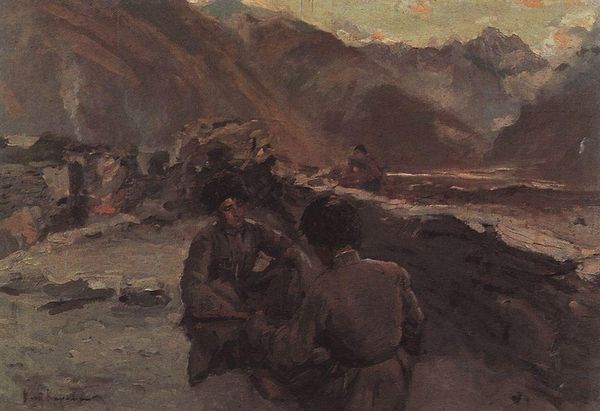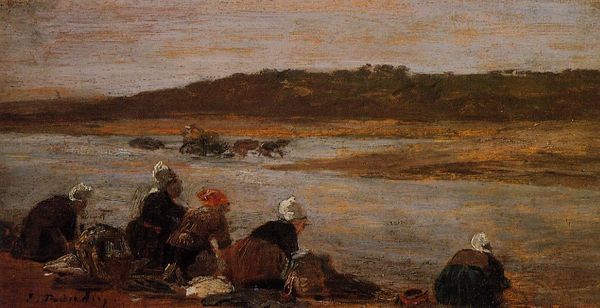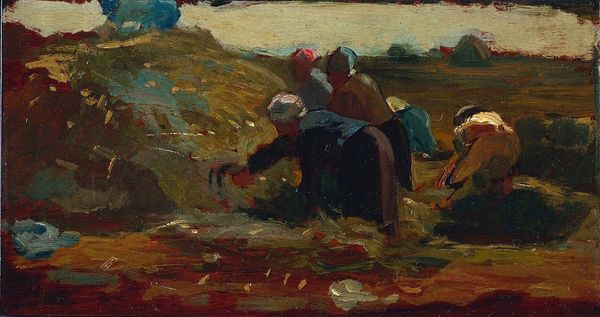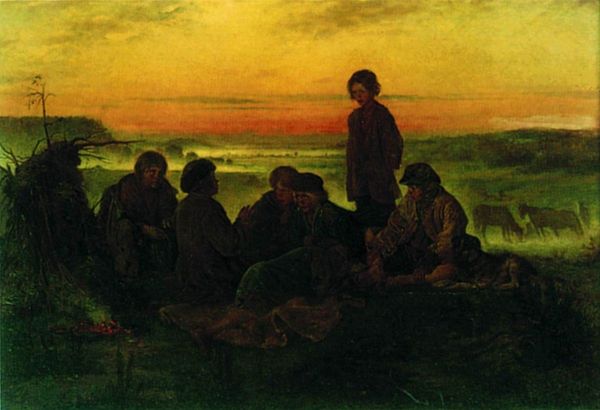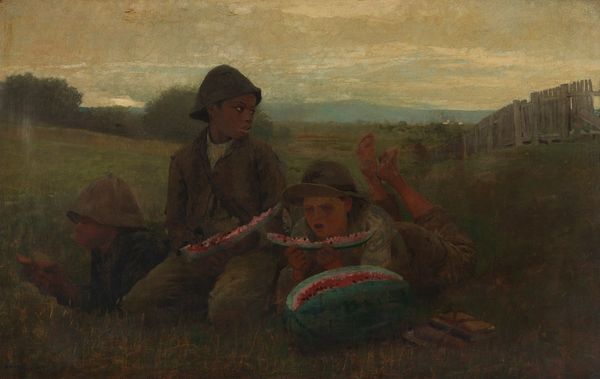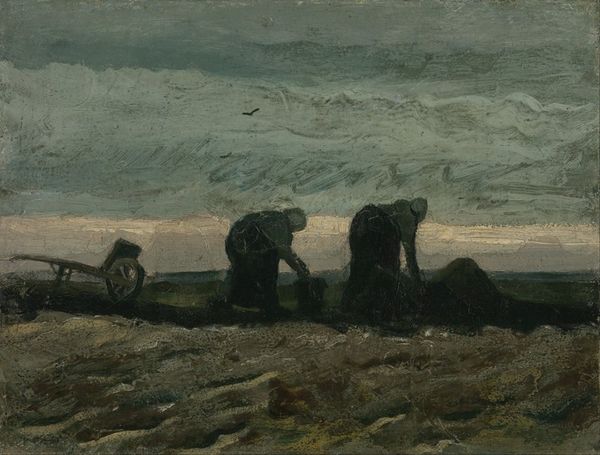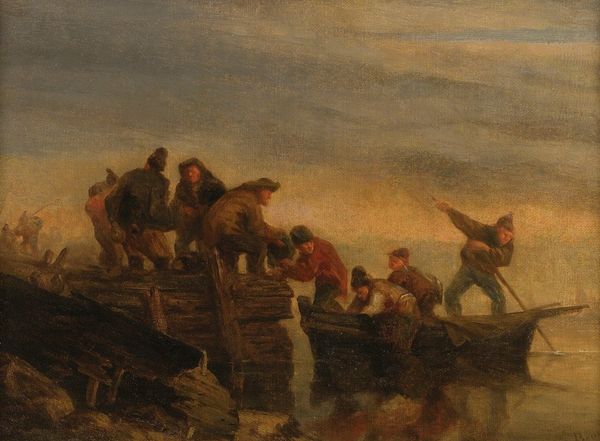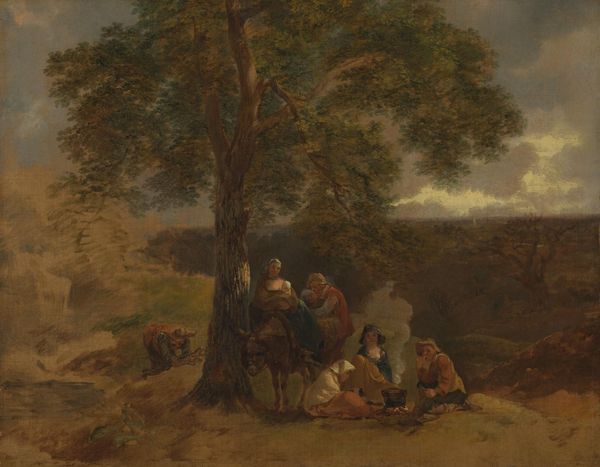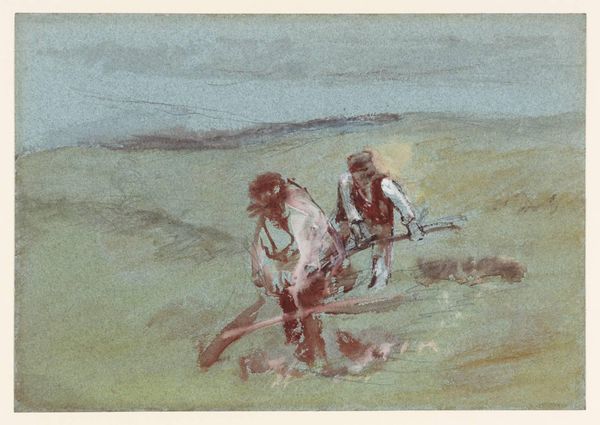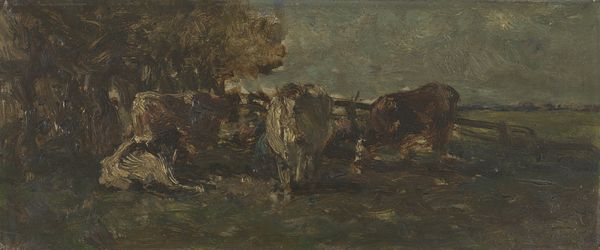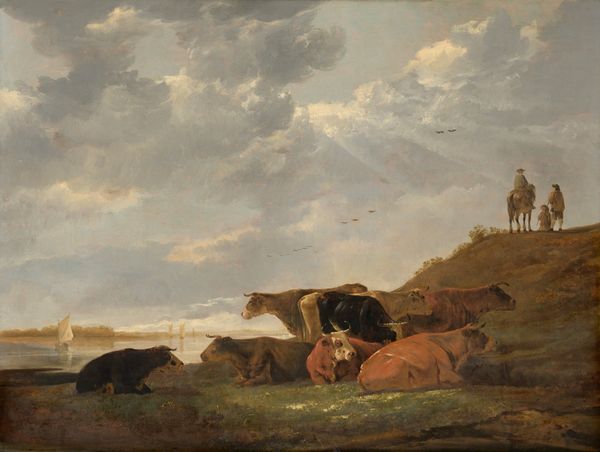
oil-paint
#
oil-paint
#
landscape
#
oil painting
#
romanticism
#
genre-painting
Dimensions: height 141 mm, width 178 mm
Copyright: Rijks Museum: Open Domain
Curator: Welcome. We are now in front of “Peasants Resting in a Meadow,” an oil painting, dated between 1770 and 1825, by Simon Andreas Krausz. Editor: It has such a tranquil, muted quality. The figures seem to blend into the landscape, everything awash in these very earthy, desaturated tones. Almost monochromatic, save for a touch of ochre. Curator: Krausz's formal construction places figures in the midground, allowing the landscape to dictate the overall structure. Note how the line of the hill mirrors that of the figures resting upon it. Editor: Absolutely. I'm curious about the context of this painting. "Peasants Resting..." What would their day have looked like, what materials are informing that dark pallet? The work appears rapidly executed, focusing more on mood than detail, yet each stroke seems purposeful. How does the paint itself reflect the world depicted, do we think? Curator: It's Romantic, yes, but restrained. The lack of clear detail and formal clarity makes this a less exuberant painting, perhaps even introspective in tone, a response to industrial encroachment maybe? Note the symbolic reduction of humans into indistinct, almost geological elements themselves. Editor: Precisely. There's a deliberate blurring of boundaries between labor and landscape, the artist using materiality to illustrate, perhaps to elevate. This blending suggests, possibly, that identity and life itself can be entirely defined through production and that constant push-and-pull between us and our own consumption. Curator: An astute observation. One can appreciate Krausz's handling of form and tone without getting bogged down in a crude, overly-determined social reading. The painting also speaks to a much grander aesthetic purpose in terms of color relationships and representational structure. Editor: But is such a purpose isolated from a larger social reality? Aren't we compelled, even now, to confront those realities, particularly the labor conditions of marginalized peoples when we talk of art, its makers, and, equally as important, it’s materials? Curator: An ongoing tension. Still, it is quite masterful in its restrained simplicity. Editor: Indeed. There is such a density of historical texture just beneath the work’s placid surface.
Comments
No comments
Be the first to comment and join the conversation on the ultimate creative platform.
